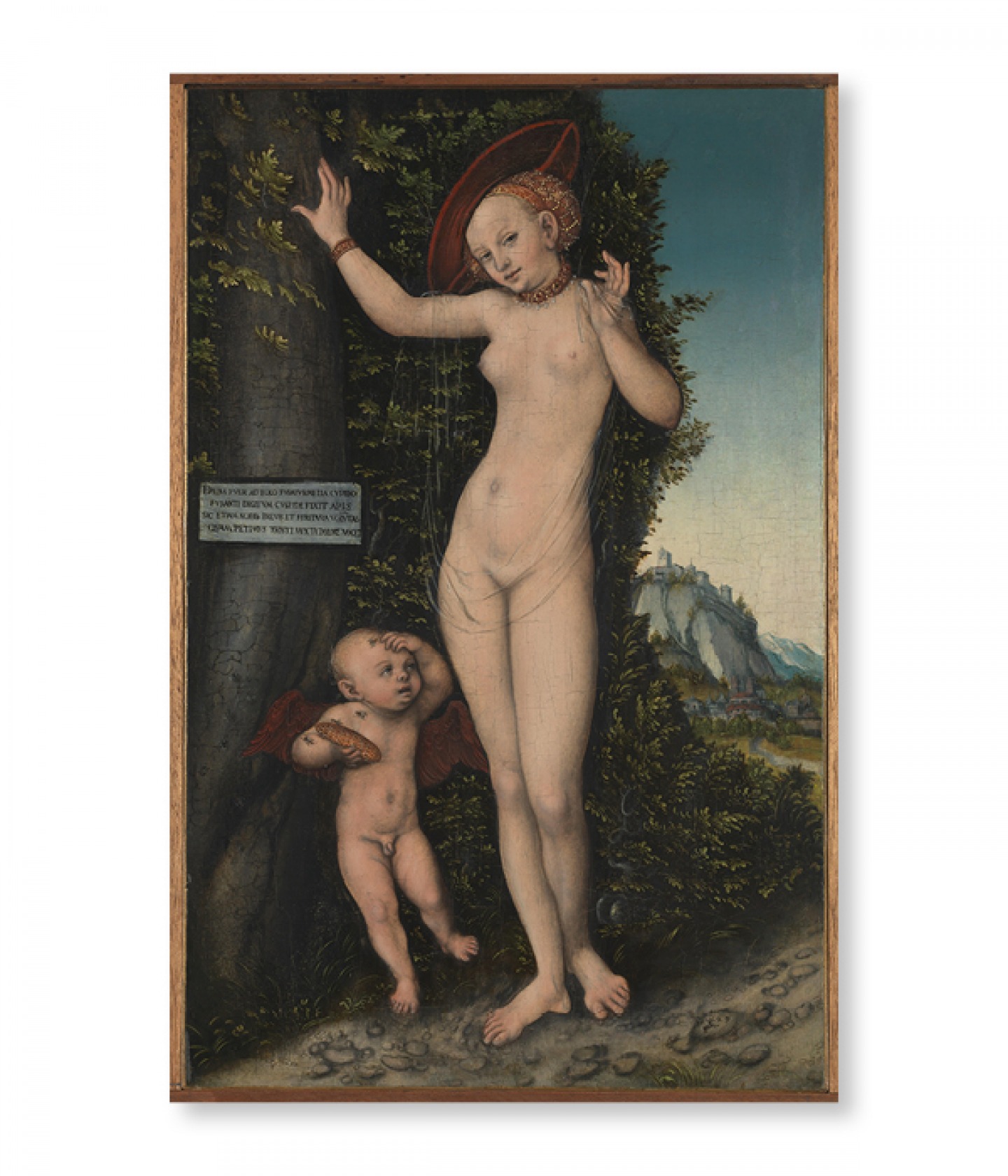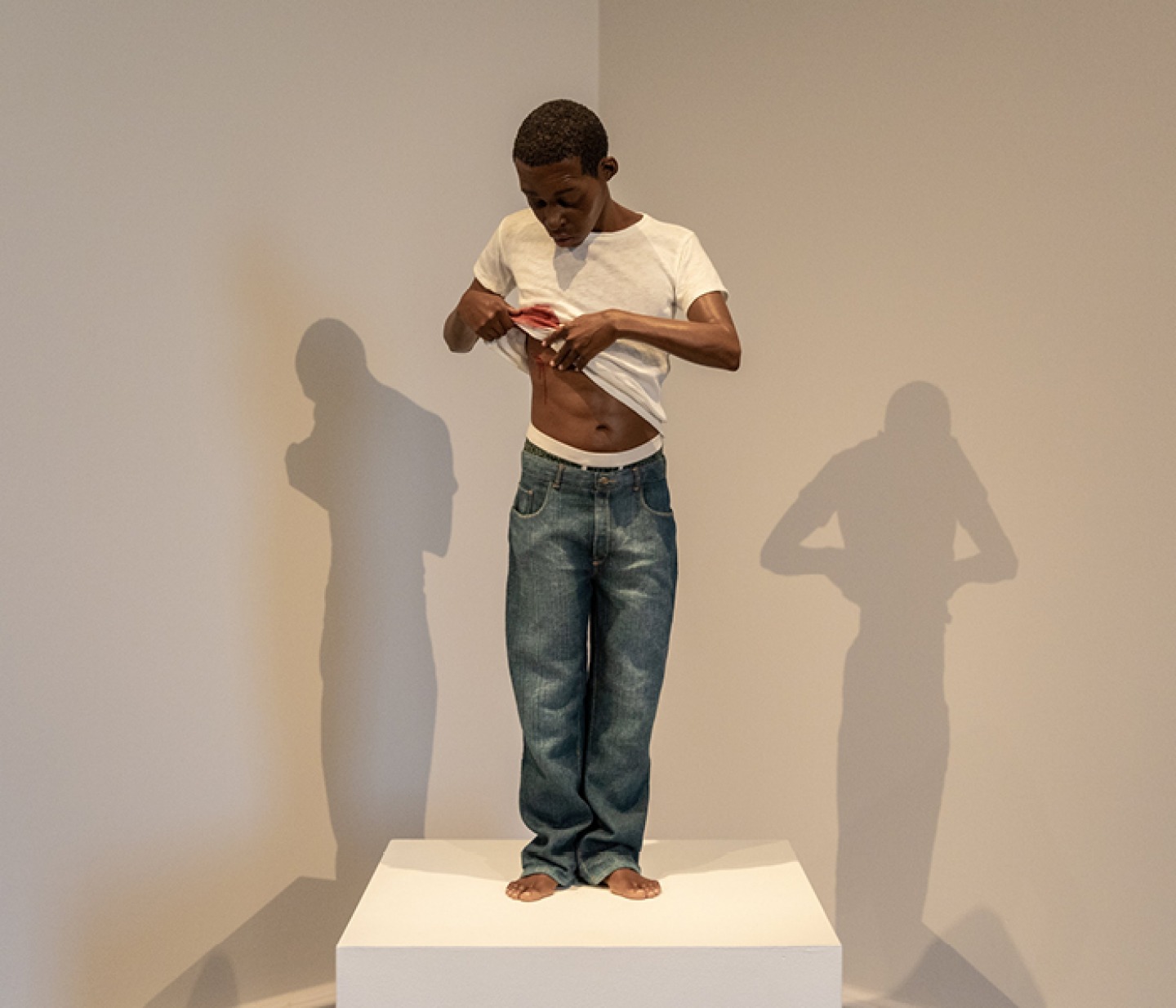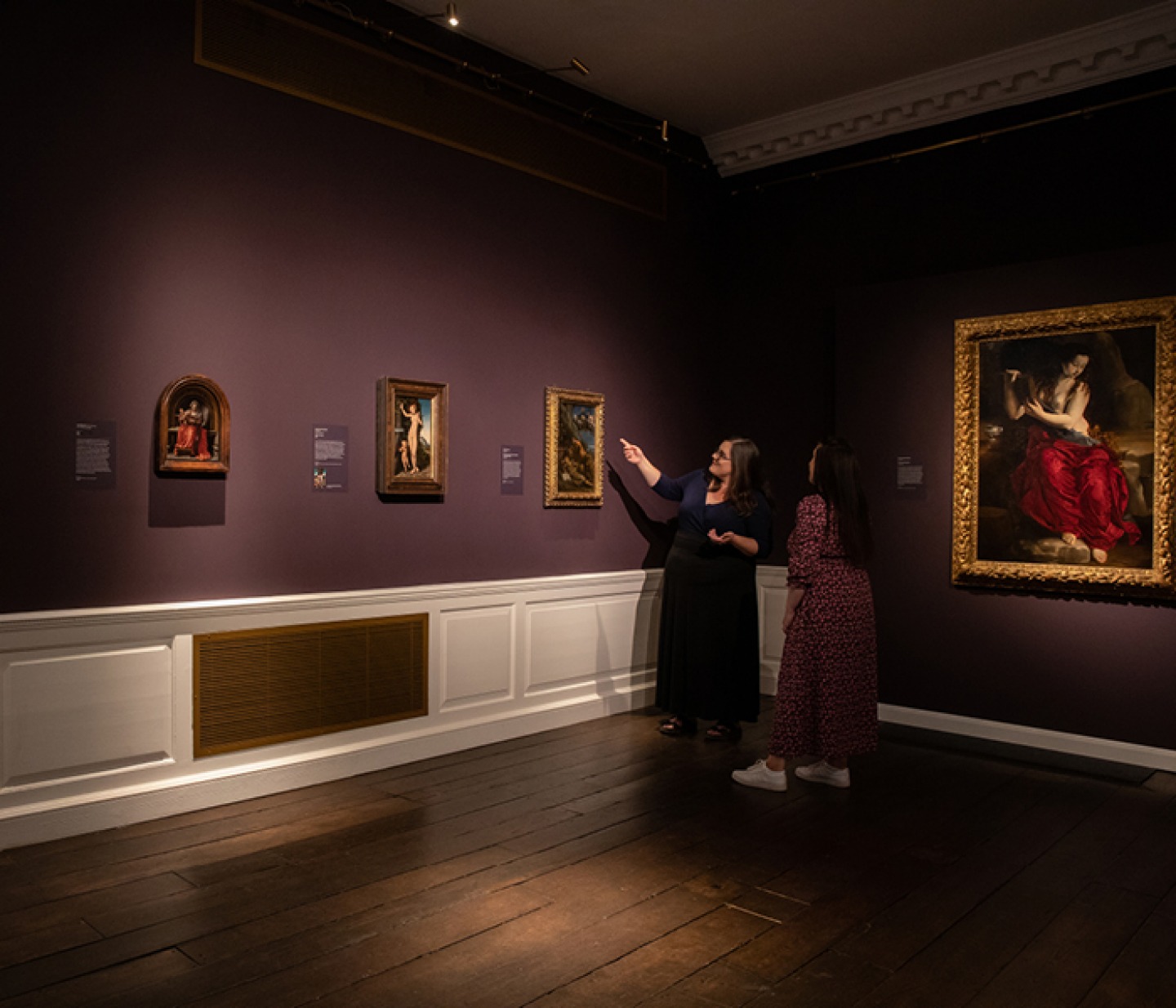What to Expect From Auckland Castle's Exhibition Sin: The Art of Transgression

Living North take a look at the new exhibition at Auckland Castle featuring work by Tracey Emin and Rembrandt
Sin: The Art of Transgression went on display in the Bishop Trevor Gallery within the castle on 17th June as part of an Auckland Project collaboration with the National Gallery – offering a chance for visitors to see works usually only available to those visiting London galleries.
‘Curators at The Auckland Project are really passionate about bringing objects like these to Bishop Auckland on loan – as these treasures are held in national collections so that everyone can see them, and this only works if they can be seen outside of the capital,’ says Charlotte Grobler (curator at Auckland Castle). ‘The National Gallery is also committed to bringing its collection to the widest possible audience. So, for us this is a match made in heaven!’
Bringing together works of art that span centuries, this unique presentation looks at theological ideas and depictions of ‘sinful’ everyday behaviours. We weren’t sure what to expect. After a tour of the castle itself we were led to the Bishop Trevor Gallery and saw a variety of works. Such a variation in fact that we think, no matter what sort of art you’re into, what your beliefs are, and how you would describe ‘sin’, there’s something on display here that will spark a conversation.


Masterpieces from the National Gallery’s own collection (including Rembrandt’s The Woman Taken in Adultery) join works on loan from leading contemporary artists, including Tracey Emin, and the exhibition also includes work from The Auckland Project’s own collection including Maíno’s The Penitent Magdalene. Tracey Emin’s It Was Just a Kiss lights up the gallery with a pop of neon pink, before you head further in to see more of the display. Despite being so different, all of these artworks explore the idea of sin, as Charlotte explains: ‘We see some delightful depictions of sinners, of sins being committed, of temptation and ultimately, of redemption’.
Sin is a concept that exists in most world religions and belief systems. ‘The idea of “sin” – that there are certain acts, thoughts, or behaviours that are against divine law or at odds with what is considered morally correct – is an idea that stretches right back to the biblical story of Adam and Eve, and to even older sources,’ Charlotte elaborates. ‘Often the first reaction someone will have to the word “sin” is to think about things they may personally have done wrong, but equally sin can be corporate – societies, governments and corporations may perpetuate and even encourage sin. Sin is also an idea that is mutable. Acts that were considered sinful 100 years ago, may not be considered sinful today. We might, quite rightly, also ask whether “sin” is a helpful or relevant concept for the world we now live in.’
‘In my opinion, it’s so interesting the way that
our secularised, modern society has an acute
awareness of “sin”, an idea that we can’t seem
to shake off, and I find that fascinating'
From a satirical depiction of greed to representations of adultery and elements of forgiveness, there’s a lot that can be drawn from the art on display here and we were in awe at the detail in some of the paintings, and the similarities and differences between them. One in particular caught our eye. Ron Mueck’s Youth provides a point of contrast and it’s arguably the most striking piece on display. It’s a hyperrealistic sculpture of a young man lifting his T-shirt to examine a wound. After admiring this piece for quite some time, we read the accompanying note comparing it to Christ revealing the stab wound he suffered on the cross. Whether you agree Youth could represent another version of Christ or you’re simply struck by the way it portrays what redemption might mean in modern society, it’s certainly a great talking point.
Everyone’s response to these pieces is likely to be different. Sin is asking visitors to define their own meaning in response to the works on display in the Bishop Trevor Gallery. ‘That’s quite a big ask, but what I hope to see is the exhibition sparking thoughts, conversations and responses to the theme,’ says Charlotte. ‘Some of the artworks are really challenging – both the contemporary pieces, like Ron Mueck’s Youth, and the older pieces like Rembrandt’s The Woman Taken in Adultery. You might go away with more questions than answers, which I think is a mark of the very best exhibitions. I love the idea of having an exhibition about sin in a bishop’s palace, in the intimate setting of what were once Bishop Trevor’s private apartments. This isn’t a new topic and I can imagine the bishop having similar conversations about sin in these rooms.’


Auckland Castle are also offering ‘Write or Wrong’ poetry workshops to gather creative responses to the artworks and the questions they raise. ‘The Sin Poetry Workshop at The Auckland Project has been extremely popular, so we added a second date to serve the extra demand,’ adds Charlotte ‘It seems we have lots of creative writers among us! Lasting two and a half hours, the workshops include a guided curator tour of the exhibition, the opportunity to explore contemporary and historic examples of poetry that evokes the theme of sin and an introduction to some poetic forms. Participants can then respond creatively to individual works from the exhibition, or the theme of sin more broadly, getting support from a professional writer. Works from the sessions are collected and recorded by either the participants or actors, and added to a specially commissioned soundscape and AV installation which will be enjoyed by visitors to the exhibition all the way to October.’
Read More: Author LJ Ross Is Honoured to Unveil the Caroline Herschel Turret at Kielder Observatory
As Charlotte says, this exhibition poses more questions than answers. ‘In my opinion, it’s so interesting the way that our secularised, modern society has an acute awareness of “sin”, an idea that we can’t seem to shake off, and I find that fascinating,’ she continues. ‘I love the Tracey Emin piece because it plays with our perceptions of sin by using neon light usually associated with “sinful” places, like nightclubs and back streets. But what does “It Was Just a Kiss” mean? There are so many ways it can be interpreted and that’s an interesting characteristic of sin. As Joost Joustra, the curator from the National Gallery responsible for this exhibition, says in the exhibition catalogue, “[it] could be words spoken to a lover, a friend, or even a priest in a confessional”. Other works by Emin have been displayed in cathedrals before and It Was Just a Kiss could even be read as a reference to the kiss Judas gave Christ before betraying him. I love that it keeps us guessing.’
There’s a busy few months ahead for The Auckland Project with a huge programme of events and activities for families focusing on history, the outdoors, creativity and storytelling. On our way in and out of the castle, we cast an eye over The Faith Museum, which is planned to open later in the year at Auckland Castle. It will house seven new gallery spaces and will explore how faith, belief, and religion have shaped lives and communities throughout British history. You know where to find us this autumn…







